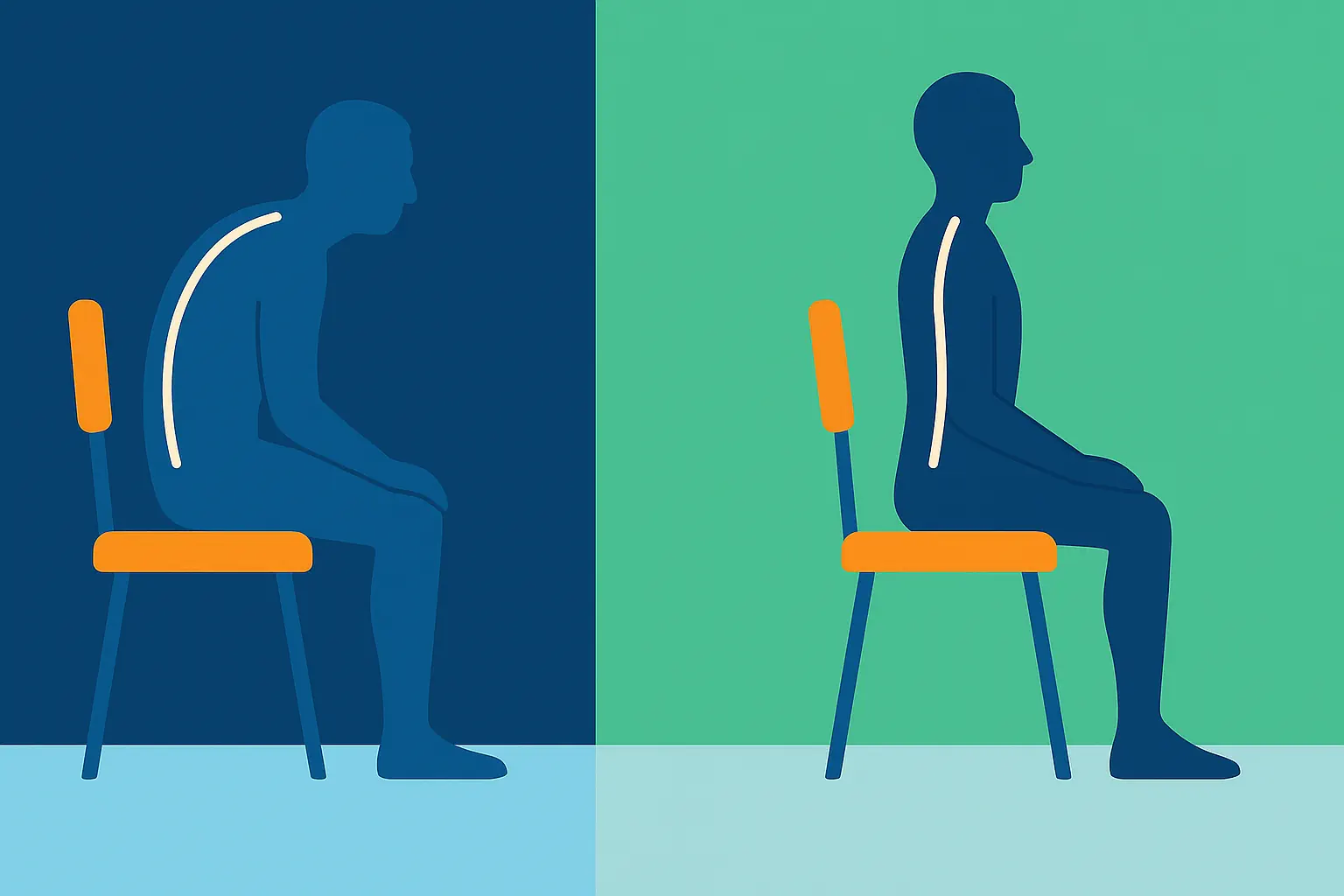It starts with something simple: catching your reflection in a shop window and realizing your shoulders are rounded forward, your chin jutting toward the ground. It’s not a flattering moment. But what if fixing that small detail could do more than just make you look taller? What if it could lift your mood, sharpen your jawline, and even make your skin look healthier?
In 2025, posture has stepped into the spotlight as one of the year’s most unexpected beauty and wellness trends. The idea is simple yet compelling — stand taller, feel better, and look younger, all without stepping into a clinic. Social media may have helped propel the “natural facelift” concept into the mainstream, but behind the hashtags lies a body of science worth paying attention to.
Posture: More Than Just a Stance
Posture is often reduced to a simple instruction: “Stand up straight!” But in reality, it’s a dynamic balance between muscles, joints, and even our emotional state. When we slump forward — whether from hours at a desk or scrolling on our phones — our body shifts into a compressed position.
This doesn’t just change how we look. Studies published in the Journal of Physical Therapy Science show that poor posture can restrict blood flow, reducing oxygen delivery to the face and scalp. Over time, this can leave the skin looking dull and the muscles of the neck and jaw underused, leading to sagging and loss of definition.
Harvard Health experts note that posture affects more than muscle tone — it influences hormone regulation and stress levels. Slouching has been linked to higher cortisol (the stress hormone), while standing tall can send positive feedback to the brain, improving mood and confidence.
The Beauty Connection
So how exactly does standing straighter change your appearance? Imagine your head as a bowling ball — when it’s balanced over your shoulders, your neck muscles simply hold it in place. But tilt it forward, and those same muscles strain under the extra weight. This constant pull can soften jawlines and deepen folds around the mouth.
Correct posture, on the other hand, subtly lifts the facial structure. Better blood flow nourishes skin cells, giving a natural glow. And perhaps most importantly, good posture communicates vitality. When you walk into a room with your shoulders open and head aligned, people notice — and not just because you look taller.
A Routine You Can Feel Working
Fixing posture doesn’t require gadgets or hours in the gym. It’s about small, intentional moments built into your day. Physical therapists often recommend starting with awareness. Try this: as you’re reading this, roll your shoulders up, back, and down, then gently tuck your chin as if creating a double chin. Feel that length in your neck? That’s the foundation.
From there, a handful of simple moves can help retrain your body. Wall Angels, where you raise and lower your arms against a wall, strengthen the upper back. Core engagement — gently pulling your belly button toward your spine — supports the lower back and pelvis. And setting hourly reminders to check in on your posture can turn good habits into second nature.
A 2018 NIH study found that targeted exercises for the neck and upper back not only improved posture but also enhanced facial symmetry in participants. That’s right — just moving differently can subtly change how your face looks.
Beyond the Desk
It’s easy to blame desk jobs for bad posture, but it’s not the only culprit. The way we walk, drive, and even sleep can shape our alignment. A pillow that’s too high can push the head forward for hours at a time, while carrying heavy bags on one shoulder can pull the spine out of balance.
Small changes make a difference: adjusting your workspace so the top of your monitor is at eye level, choosing a backpack over a single-strap bag, and practicing mindful walking — with shoulders open and core engaged — all add up.
And don’t underestimate the mental connection. Research from the University of Auckland found that upright posture can improve resilience to stress and boost self-esteem. In other words, standing tall doesn’t just make you look confident — it can actually help you feel it.
The Myths That Hold Us Back
One of the biggest misconceptions is that good posture means holding yourself rigid all day. In truth, the body is designed to move. Staying locked in one “perfect” position can cause as much strain as slouching. The goal is balance: regular movement, gentle corrections, and enough strength in key muscle groups to keep you upright without effort.
Another myth is that it’s “too late” to improve posture after a certain age. But physical therapy research consistently shows improvements in spinal alignment and muscle tone well into older adulthood. It’s never too late to start.
A Habit Worth Keeping
Think of posture like brushing your teeth. You don’t do it once and expect lasting results — you do it daily because the benefits compound over time. The more you practice, the more natural it becomes. And as your body adapts, you may notice fewer aches, more energy, and a quiet boost in self-assurance.
In the end, better posture is about more than looking good in photos. It’s about reclaiming space — in your body, in your presence, and in the way you carry yourself through the world.
References:
- Lee, J. et al. (2015). The effect of posture correction exercises on neck muscle activity and posture. Journal of Physical Therapy Science.
- National Institutes of Health. Postural correction exercise and facial symmetry.
- Harvard Health Publishing. Why good posture matters.
- University of Auckland. Posture and resilience study.

